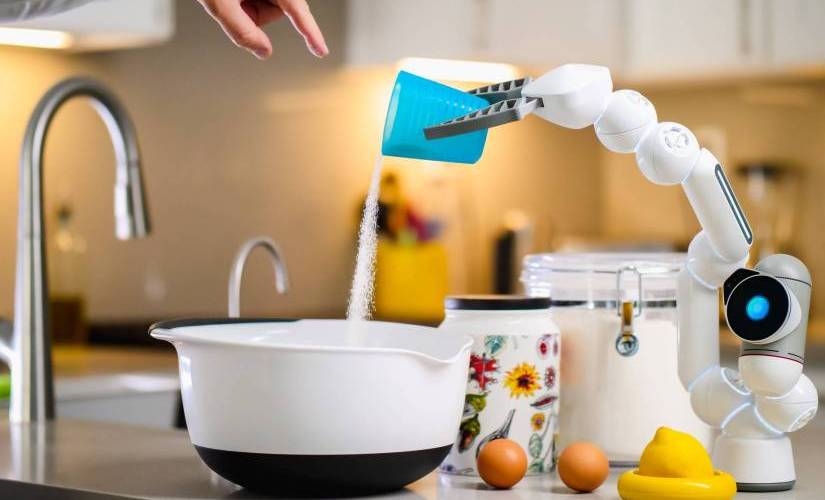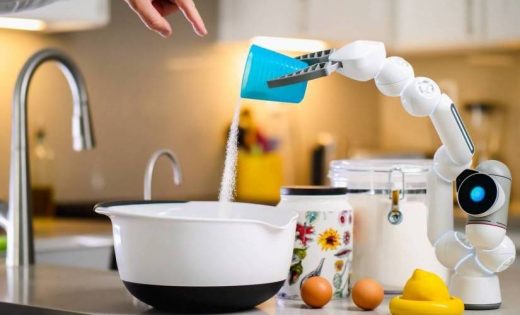Attitudes Shift to Internet of Things and Smart Homes
Attitudes Shift to Internet of Things and Smart Homes

The (AIoT) “artificial Internet of Things,” a technology ecosystem, emerged during the pandemic. Then the Smart Home was developed.
The AIoT combines connected things (the IoT), and artificial intelligence (the AI) used within these things.
These past 12 months have been challenging. The pandemic caused havoc around the globe, and people now realize that Covid-19 is here for good.
We now accept this fact and look for ways to adapt our lives and interactions with the world. To ensure that people live safe, productive, and happy lives, governments, industries, and businesses constantly change the status quo.
People have had to make changes in how and where they work. Over the past year, working from home has become the norm. Businesses may continue to permit employees to perform remotely as long as the employees remain productive. Working from home has led to a renewed emphasis on the importance of work and our homes’ value. Discussions around tech-enabled smart homes are now more timely than ever.
Smart homes and all the technology involved are still a very young industry. Last year, research determined the obstacles preventing the AIoT from becoming a reality. Electronic engineers identified significant market-level as well as device-level issues in that research. Then, researchers did the same study a year later to see how things had improved. The headline? What headline? There were no results reported.
AI has security concerns due to its dependence on data. The more information a device needs, the more brilliant it is. Engineers have discovered that local processing of data can resolve privacy concerns. Homes can keep their data in their walls without sharing it with third parties in the cloud. Merely reducing third-party cookies reduces the risk of data leakage.
Smart Home
A smart home can be used to store data so a distant cybercriminal wouldn’t have to become a common burglar to steal it. Although it is unlikely that this will happen, device manufacturers must make sure that the data processing on their devices is secure.
You can have significantly better safety when it comes to data and decision-making by using various security features at the device level, such as secure key storage, accelerated encryption, and actual random number generation.
Engineers felt that connectivity was a significant barrier to AI deployment. However, only 27% of industry professionals consider connectivity to be a substantial obstacle to technology, and 38% expressed concerns about the technology’s ability to overcome latency issues. For example, in-home healthcare monitoring can’t afford to be hampered by poor connectivity when it comes to making decisions about potentially life-changing circumstances like heart attacks. However, the use of on-device processing makes network latency irrelevant.
If the industry wants to develop applications that don’t suffer from latency, it should shift to on-device computing. Product makers can now execute some AIoT chips in nanoseconds allowing products to think quickly and make decisions with precision.
AIoT
Engineers also highlighted the problem of scaling last year. Engineers know that the number of connected devices keeps increasing, putting more strain on cloud infrastructure. About 25% of engineers believe that scaling is a barrier to edge technology’s success in 2020. However, experts are beginning to recognize the IoT’s deep-rooted scalability advantages.
The cloud is no longer a factor in processing at the edge, negating any potential scaling and growth issues. Today, less than one-fifth of engineers think cloud infrastructure can hold back edge Ai.
The good news? The electronics industry doesn’t have to do anything to ensure the IoT’s scalability. One of the leading technical obstacles to the IoT’s expansion is the need for cloud processing to handle billions more devices and petabytes in the future — which has now been eliminated.
Increase power capability, decrease power consumption
The market for AIoT has grown over the last year. It’s also made progress on a technical level. The on-device processing capabilities of AI have improved while decreasing the power required and the expenditure. Chip owners can now adapt the chips to the various needs of the AIoT at an affordable price point.
How can engineers make the transition to using AIoT chips as a realistic option for product makers?
The development environment is a crucial consideration. New chip architectures often mean immature and untested proprietary programming platforms that engineers must learn and become familiar with.
Engineers should instead look for venues that can afford using industry-standard methods that they are familiar with. Industry-standard methods include full programmability and runtime environments such as FreeRTOS, TensorFlow Lite, and C. Engineers can quickly program chips using friendly platforms without learning new languages, tools, or techniques.
It is essential to have a single programming environment that can handle all the computing requirements of an IoT system. Computing requirement capability will always be the key to enabling the design speed necessary to bring in fast, secure AI at home in the new post-covid era.
Image Credit: Kindel Media; Pexels; Thank you!
The post Attitudes Shift to Internet of Things and Smart Homes appeared first on ReadWrite.
(36)


